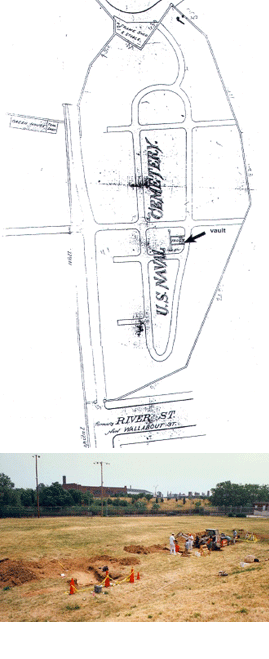Brooklyn Navy Yard Cemetery
Brooklyn, NY
 To prepare for the disposal of the hospital property at former Naval Station Brooklyn (NAVSTA), the Navy hired TAMS, Inc., an engineering and environmental firm, who then engaged Joan H. Geismar, Ph.D., an archaeological consultant, to determine if archaeological issues were a potential concern. Research eliminated prehistoric resources from the equation but determined that the hospital’s associated, but long-defunct, burial ground was a potential issue.
To prepare for the disposal of the hospital property at former Naval Station Brooklyn (NAVSTA), the Navy hired TAMS, Inc., an engineering and environmental firm, who then engaged Joan H. Geismar, Ph.D., an archaeological consultant, to determine if archaeological issues were a potential concern. Research eliminated prehistoric resources from the equation but determined that the hospital’s associated, but long-defunct, burial ground was a potential issue.
Maps, such as this 1891 plan of the cemetery, and intensive document research established the cemetery’s configuration, a minimum number of burials, and the makeup of the buried population. This proved to include many nationalities and ethnicities and to be a space shared by African-American sailors and others who were sailors and marines and sometimes their families. Perhaps the most “exotic” burial was Chief Veindovi, a royal Fuji Islander who died of consumption in 1842. Despite documented removal of over 900 burials in 1926, the issue of human remains persisted.
"Ground Proofing" in the form of test pits was carried out following a ground penetrating radar (GPR) survey. The goal was to identify underground anomalies that suggested burials or associated ground disturbance. Testing confirmed that burials had been removed but that evidence of the site's burial-ground past remained.
